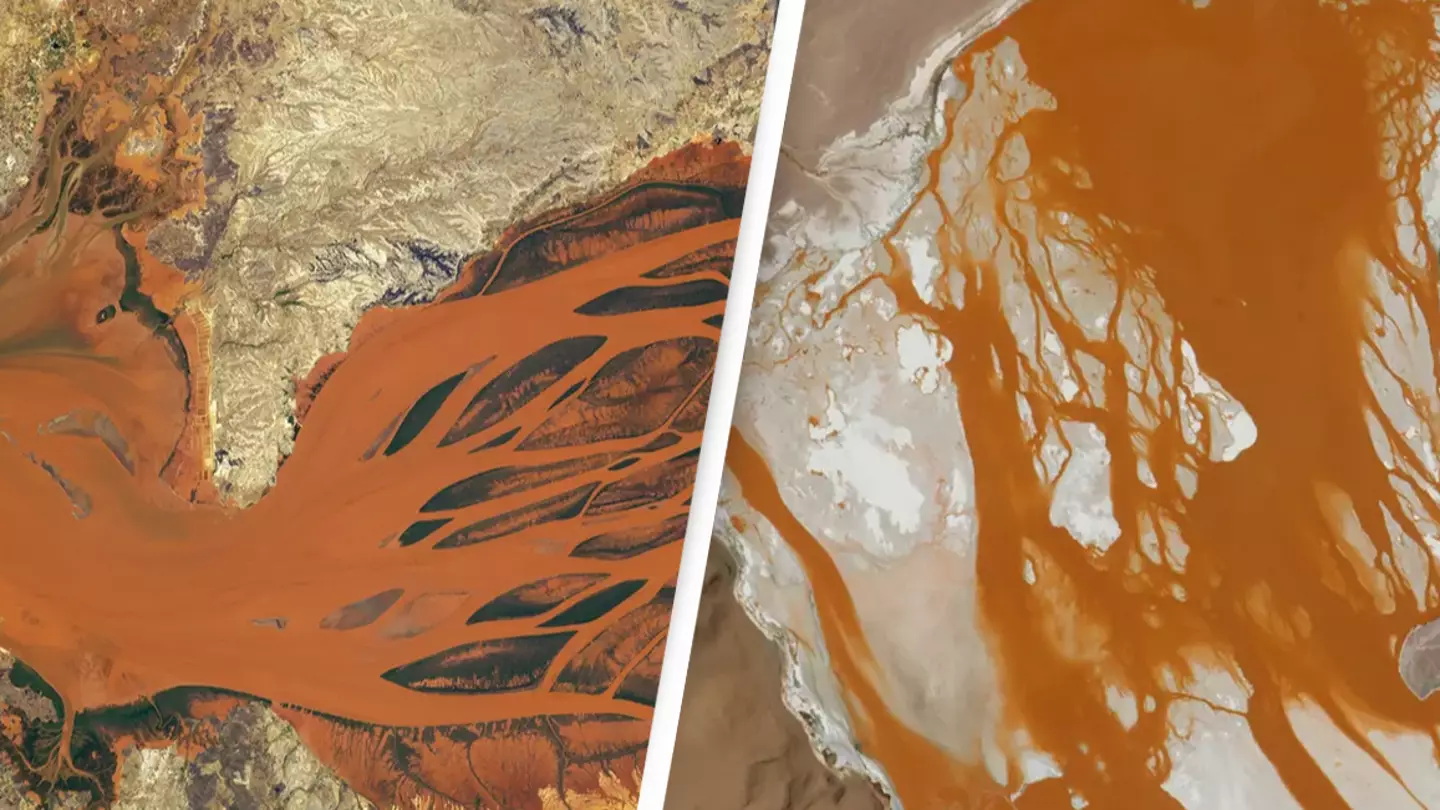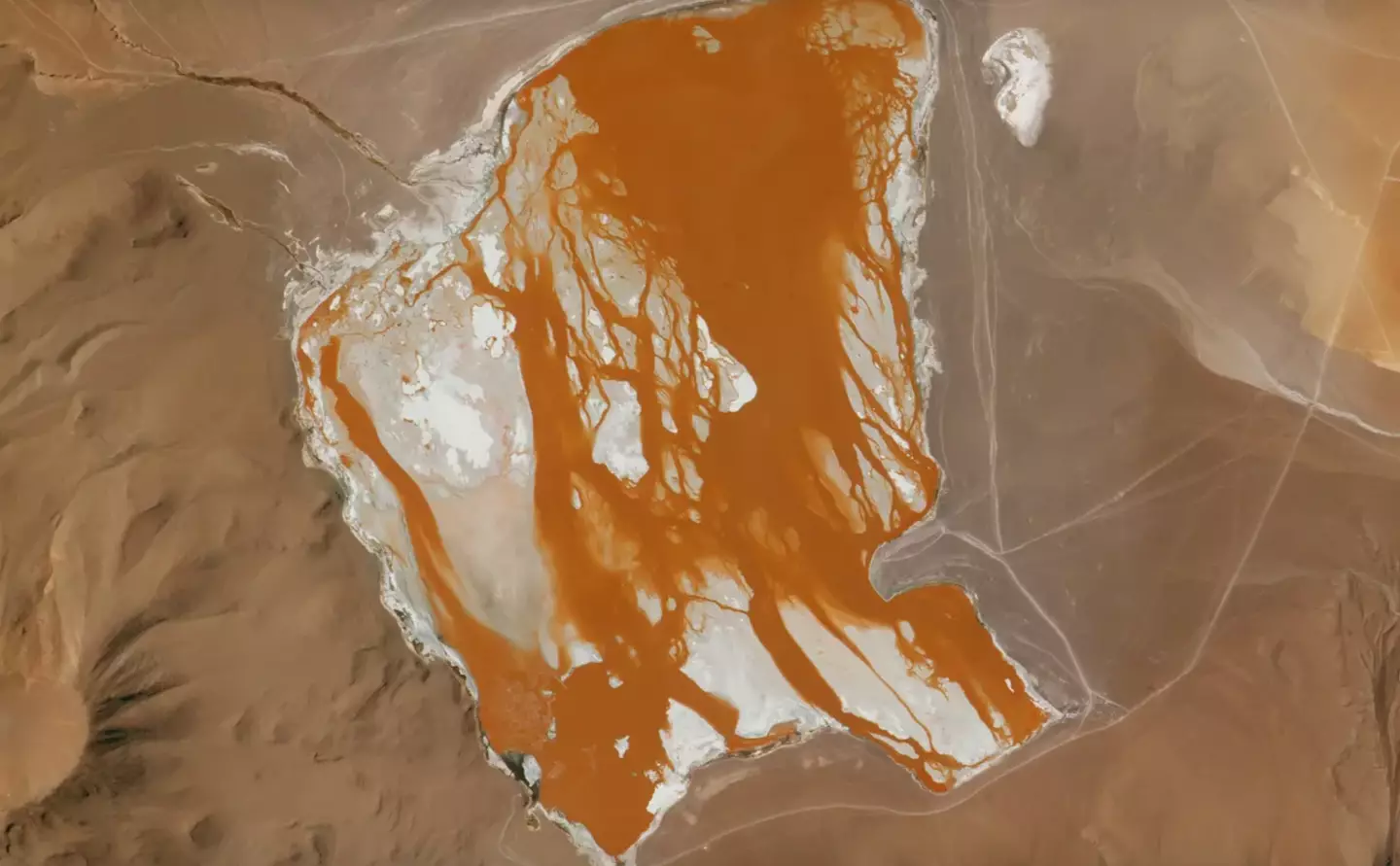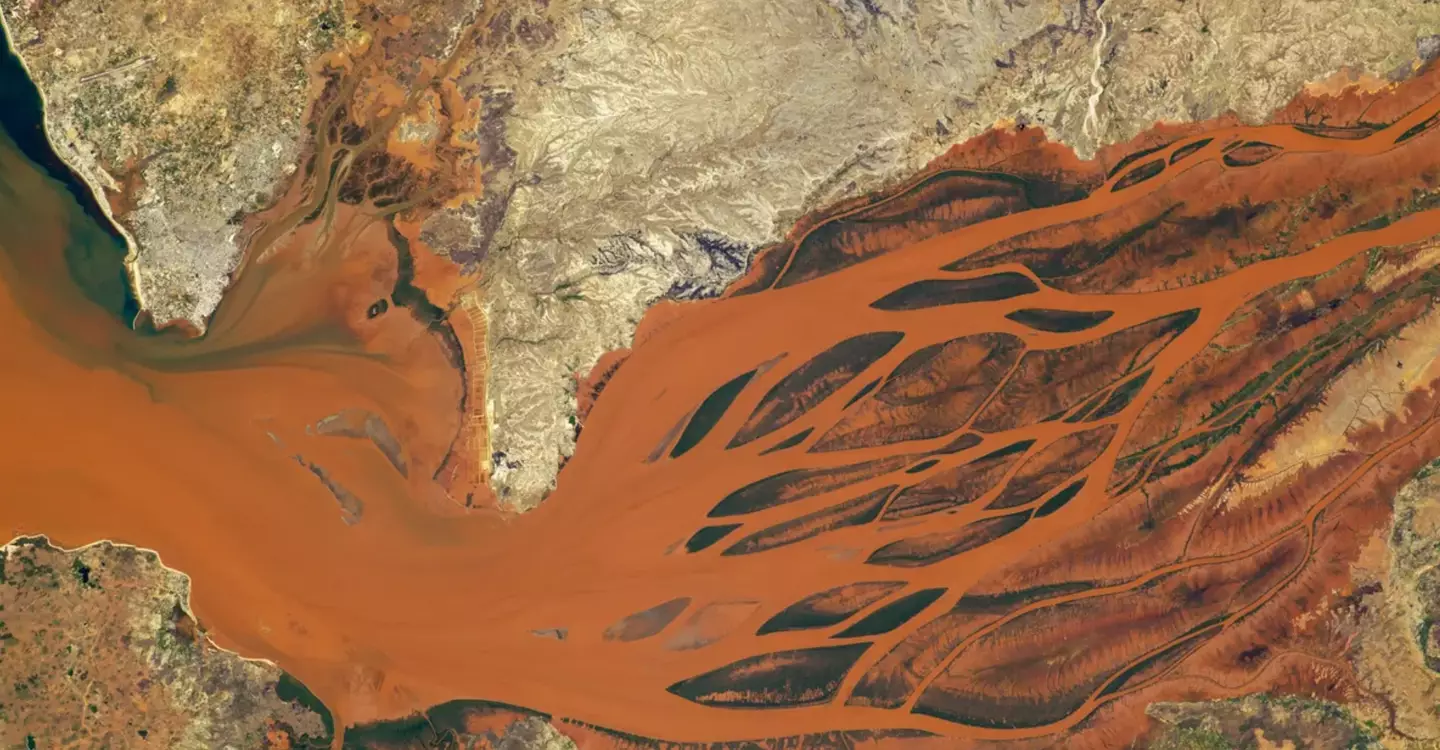
The chance to observe Earth from above is something that only a minuscule selection of human beings will ever be lucky enough to tick off their bucket lists.
However, astronauts residing in the International Space Station (ISS) got a bit of a shock when looking down on our planet and noticed it expelling a gory red substance.
Despite the eerie image, NASA have insisted that there's no cause for concern, and that the Earth is certainly not 'bleeding'.
In fact, there is an explanation for the planet oozing this flaming blood orange liquid.
Advert
Using a Nikon D5 digital camera, a member of the Expedition 69 crew captured the seemingly leaking liquid, which was located in the Bolivian Andes in South America on 7 September.
They soon realised, however, that the red liquid was actually the Laguna Colorada - a shallow salt lake in the Eduardo Avaroa Andean Fauna National Reserve.

But what they were seeing wasn't the Earth's equivalent to the elevator doors opening in The Shining, but rather rusty brown tint to the water caused by red algae which had been booming in the hyper-salty waters - optimal environmental conditions for the plant.
Advert
And this isn't the first time this phenomenon has been seen before, with a similar occurrence being observed in the world-famous Great Salt Lake in Utah and in Lake Aralsor in Kazakhstan.
In all of these instances, the growth of red algae is influenced by 'a combination of light intensity, salt content, pH levels, and temperature'.
And just three weeks after their initial discover, Expedition 70 crew spotted another colossal puddle of red, located just off the coast of east Africa.
This time, crew members realised that they'd photographed the Betsiboka River Delta in Madagascar - throwing cold water on their initial fears.
Advert

But despite the waters looking as red as those of Bolivia in the weeks prior, they realised that this color was caused by a different process - with the river instead running red due to iron-rich sediment in its waters.
This can clog waterways in the water's estuaries and -in some cases - can even form new islands.
This type of sediment also impacts the colour of the Jacui River in southern Brazil.
Advert
However, despite the red hue, scientists said that these bodies of water are ideal for biodiversity.
"Algae and other microorganisms serve as a vital food source for vulnerable bird species, such as the Andean flamingo in the Laguna Colorada." NASA's Earth Observatory said.
"Within the Betisboka River Delta, the estuary provides food, such as seagrasses, to the endangered green turtle and vulnerable dugong, or sea cow."
Bloody brilliant.
Topics: International Space Station, Space, NASA